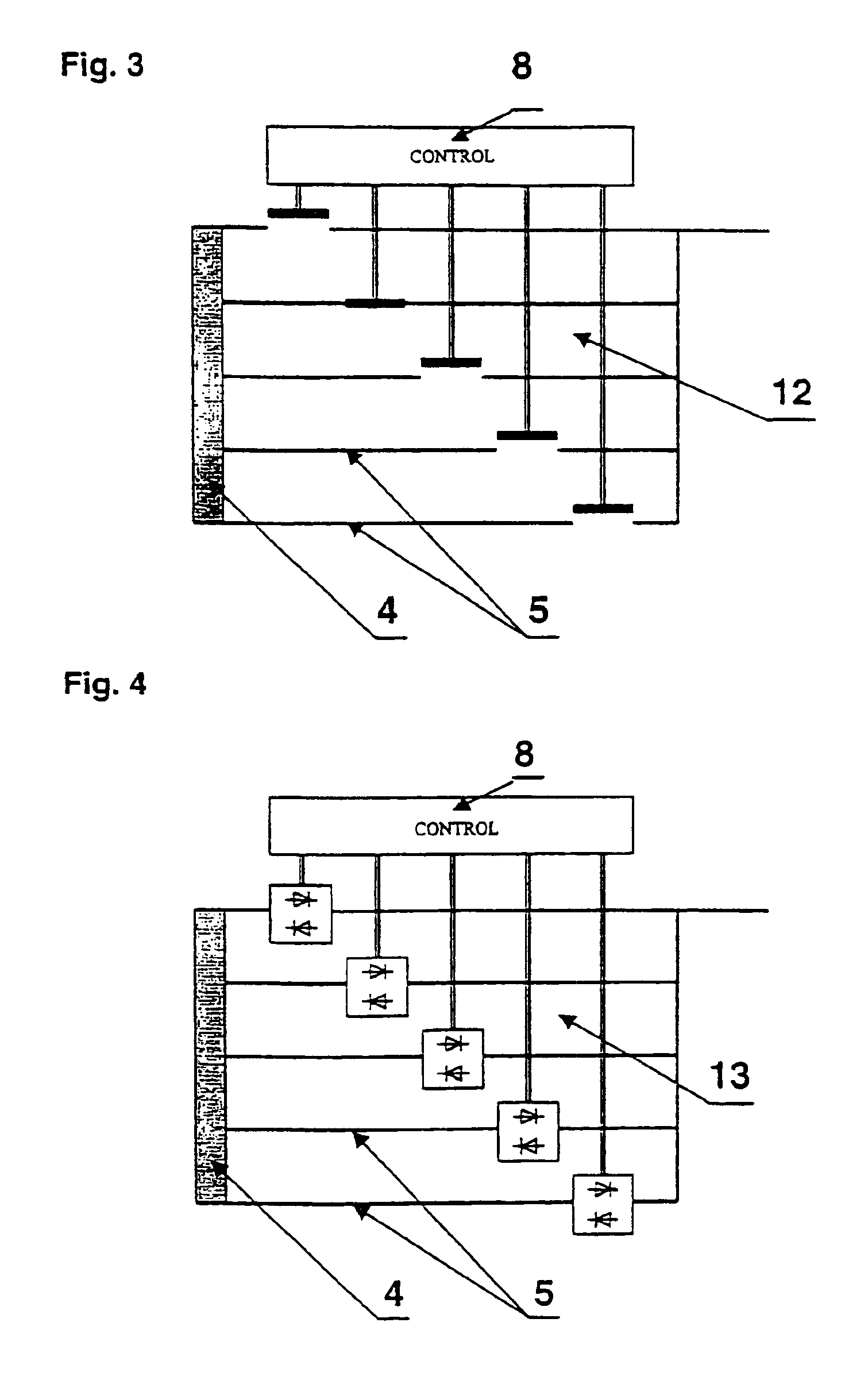Limiting ring current in short circuit between adjacent partial wingings by increasing leakage impedance
a short circuit and impedance technology, applied in the direction of variable inductance, automatic controller, electric variable regulation, etc., can solve the problem that the voltage fluctuation caused by a change in node cannot be adjusted between the network node and the end consumer, and the short circuit between adjacent partial wingings cannot be regulated under load, so as to achieve better and more efficient use
- Summary
- Abstract
- Description
- Claims
- Application Information
AI Technical Summary
Benefits of technology
Problems solved by technology
Method used
Image
Examples
Embodiment Construction
[0042]By way of introduction, it is noted that in the described embodiment the same parts and the same states are allocated the same reference numbers and the same component names, whereby the disclosures contained throughout the description can be applied by analogy to the same parts and the same states with the same reference numbers or same component names. Moreover, individual features from the embodiment illustrated can represent independent solutions according to the invention in themselves.
[0043]FIG. 1 shows a device for regulating the electric voltage between one network node 1—represented by the arrow—and one end consumer 2—also represented by an arrow—whereby a regulating transformer 3 in the form of a one-coil transformer is provided for regulating the voltage. This one-coil transformer has a regulating winding with partial windings 4. The regulating winding is connected to the primary winding 6 of the one-coil transformer via a tapping 5, for example via a middle tapping...
PUM
 Login to View More
Login to View More Abstract
Description
Claims
Application Information
 Login to View More
Login to View More - R&D
- Intellectual Property
- Life Sciences
- Materials
- Tech Scout
- Unparalleled Data Quality
- Higher Quality Content
- 60% Fewer Hallucinations
Browse by: Latest US Patents, China's latest patents, Technical Efficacy Thesaurus, Application Domain, Technology Topic, Popular Technical Reports.
© 2025 PatSnap. All rights reserved.Legal|Privacy policy|Modern Slavery Act Transparency Statement|Sitemap|About US| Contact US: help@patsnap.com



